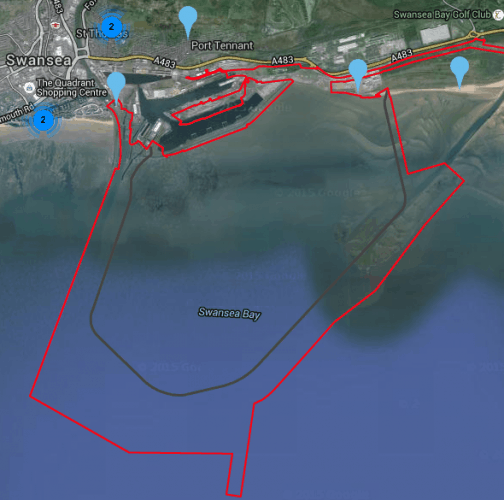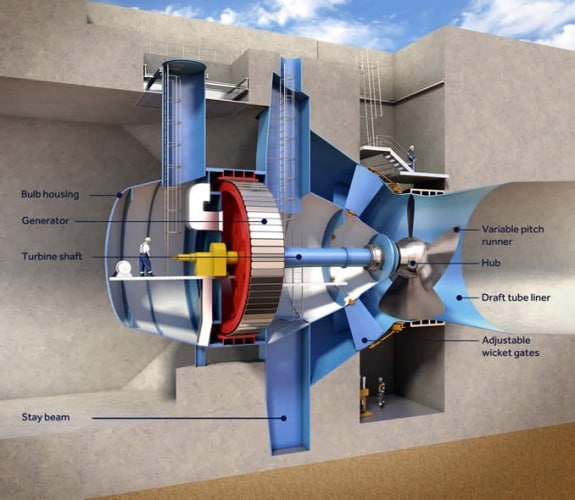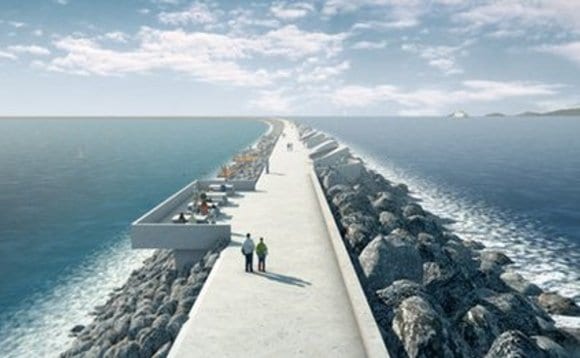
The review, led by former energy minister Charles Hendry, comes over a year after plans for the Swansea demonstrator project were put on hold. It advocates the formation of a new Tidal Power Authority to oversee the tender process for large-scale tidal lagoons and maximise the benefit to the UK. Hendry also recommends that a pathfinder project be undertaken before moving to larger lagoons.
“I believe that the evidence is clear that tidal lagoons can play a cost effective role in the UK's energy mix and there is considerable value in a small (less than 500MW) pathfinder project,” Hendry said in statement.
“I conclude that tidal lagoons would help deliver security of supply; they would assist in delivering our decarbonisation commitments; and they would bring real and substantial opportunities for the UK supply chain.”
“The aim now is that we should move to secure the pathfinder project as swiftly as possible, so the learning opportunities it offers can be maximised. I have, however, also concluded that the smaller pathfinder project needs to be operational before we move to larger scale projects. This means that a clear long-term government strategy in favour of tidal lagoons will be required if the full supply chain and cost reduction opportunities are to be realised.”

According to Hendry, the costs of a pathfinder project – almost certain to be located at Swansea, where Tidal Lagoon Power (TLP) has been developing plans - would be about 30p per household per year for the first 30 years. The 16 turbines that will harness the tide in Swansea are 7.5m in diameter and 76m in length. Built by General Electric and Andritz Hydro, their combined output will be 320MW of electrical power. The technology is designed to last, with the aforementioned plant life expectancy of 120 years, and no major refurbishments anticipated for the first 50 years of operation.
Using Swansea as proof of concept, TLP’s plan is to scale up, first to nearby Cardiff and Newport, then to West Cumbria, Colwyn Bay and Bridgwater Bay. The Cardiff project would see a longer breakwall constructed, with 10 times the volume of water enclosed. It would deliver between 1,800MW and 2,800MW installed capacity and an annual output of between 4TWh and 6TWh.
“Although it may seem relatively expensive at first, it’s important to remember that [Swansea] is a pathfinder project which, when applied at greater scale in other locations, promises long-term cost competitive and predictable renewable energy, and a potentially exportable technology,” said Dr Simon Harrison, chair of the Institution of Engineering and Technology’s (IET) Energy Panel.

“While, there are no major underlying concerns over technical viability there are many issues to explore through Swansea Bay, both technical and environmental, and the learning from this project will be essential in shaping future developments and in determining their viability.”
Dr Athanasios Angeloudis, from Imperial College London’s Department of Earth Science and Engineering, also commented: “The UK is blessed with some of the largest tidal energy resources in the world and this outcome should be seen as a landmark step towards making the first significant contribution to the national electricity mix from this sustainable energy source.”
“This is a major opportunity for the engineering industry and UK universities that have pioneered marine energy research worldwide, to cooperate and ensure that ongoing tidal energy projects reflect and deliver upon their potential.”




Red Bull makes hydrogen fuel cell play with AVL
Formula 1 is an anachronistic anomaly where its only cutting edge is in engine development. The rules prohibit any real innovation and there would be...